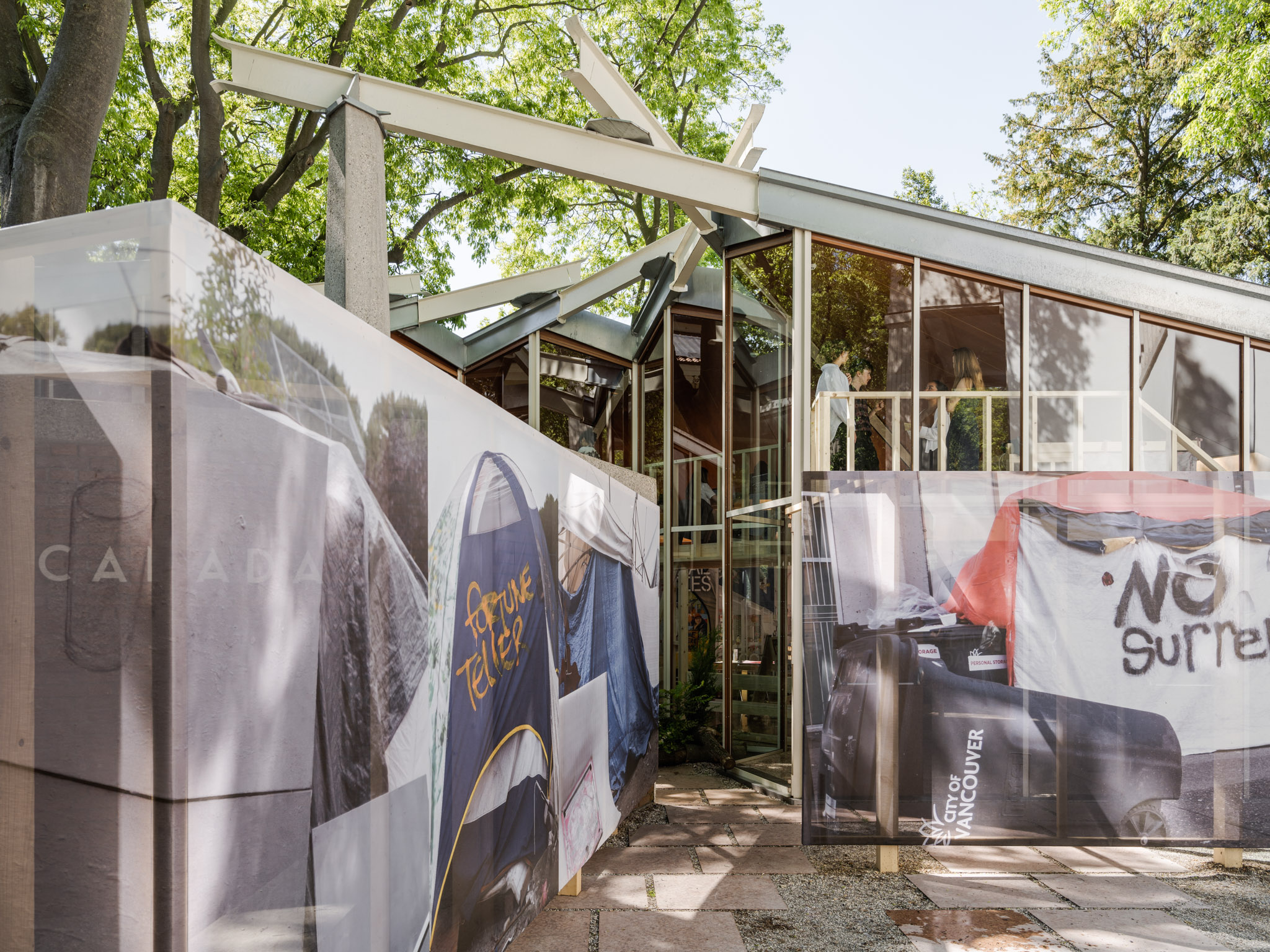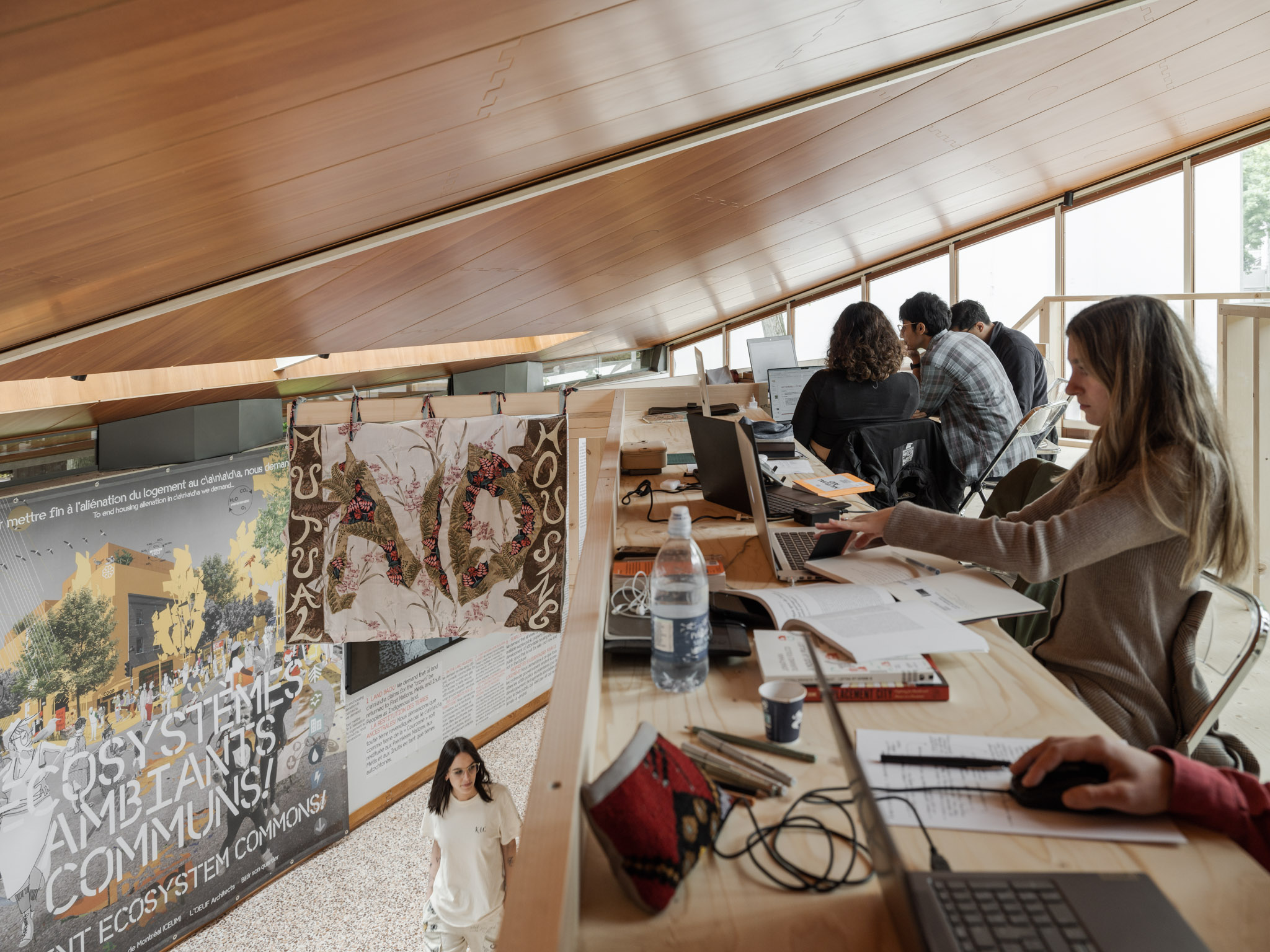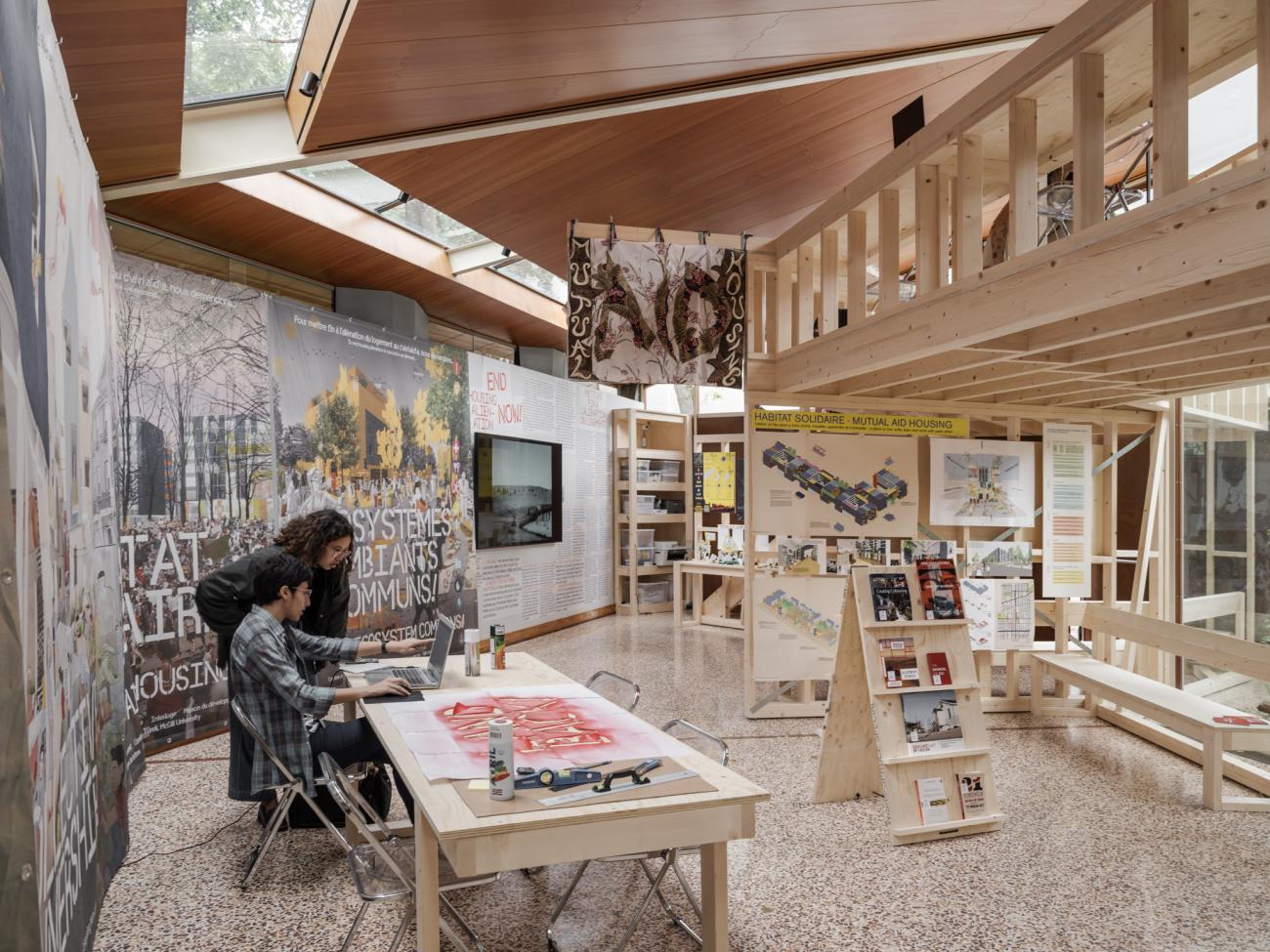Activism and architecture meet at this year’s Venice Biennale
UBC’s School of Architecture + Landscape Architecture (SALA) is co-leading an exhibit highlighting Canada’s housing crisis at the world’s largest architecture festival.
Since May 20, Architects Against Housing Alienation (AAHA), a collective of architects, students, researchers, and activists, have been bringing Canada’s housing crisis to the global stage at the 2023 Venice Biennale of Architecture.
As the country’s representative to the world’s biggest architecture festival, AAHA’s Not For Sale! exhibit shines a light on the need for safe, equitable, and affordable housing in Canada to hundreds of thousands of visitors from across the globe.
Using an interactive display, live workshops, and guided tours, the installation inside the Canadian pavilion serves as the heart of an activist campaign, presenting 10 key housing demands and proposed strategies for different levels of government in Canada.
“The installation is the product of many months of effort from over 100 people from across the country, who developed new work that seeks solutions to existing problems in the system of housing in Canada — from designs for housing to financial frameworks and policy proposals. This work fills the pavilion, which also serves as a working space to advance the campaign to decommodify housing,” said AAHA curator Matthew Soules, SALA associate professor.

Fifteen SALA graduate and undergraduate students are occupying this space as part of a UBC study abroad studio course. Led by Soules, the studio will explore each of the campaign’s 10 demands, engaging with the team members who created each demand, and develop design responses based on campaign collaborators’ work.
“SALA students have a unique opportunity while in Venice to participate in an international conversation about contemporary questions in architecture, and to engage and co-develop the work of the Canada-based teams to bring the campaign back to Canada,” said Sara Stevens, AAHA curator and associate professor at SALA.
Through student efforts, AAHA has been making waves on social media since early March, drawing attention to Canada’s protracted housing crisis and potential solutions via thought-provoking posts on Instagram and TikTok.
“The media savvy of our students and their dedication to creating a nationwide campaign against the commodification of housing contributed to our message resonating beyond the architectural community,” said Tijana Vujosevic, SALA assistant professor and AAHA curator.
“Instead of advertising the pavilion alone, they created educational and journalistic pieces on housing that people read and watch for their own merit.”
Demands to end housing alienation
Defining housing alienation as a state where homes have become a financial tool divorced from the actual need for shelter, Not For Sale! highlights 10 demands to help change course. These demands include:
- Return land to First Nations, Métis, and Inuit Peoples
- Create off-grid, nomadic communities for Indigenous women and girls with access to strong support services
- Establish house manufacturing facilities on reserves, to build housing capacity within communities
- Provide funding for Black-led community land trusts for the creation of affordable housing and commercial space
- Set up a gentrification tax to secure deeply affordable housing within a community land trust
- All levels of government should make available surplus public property assets for the development of affordable housing
- Use underutilized land to fund and build intentional communities for unhoused people
- Municipalities should incorporate guidelines that prioritize co-living, cooperative, and co-housing over speculative real estate development
- Establish mutual aid housing in the urban core, to foster cooperative support among people of diverse backgrounds and experiences
- Uphold ambient urban ecosystems like greenspaces as a necessary element of social housing
“The fight we are trying to launch, with this campaign for non-alienated housing, is really to help people understand that connections have been broken and they need to be stitched back together or recreated. Our argument against housing alienation is very similar to the statement ‘Not for Sale!’
“‘Not for Sale!’ is just a simpler way of putting it,” noted AAHA curator Adrian Blackwell, an associate professor at the University of Waterloo School of Architecture.
Diverse voices for change
AAHA’s Not For Sale! presents different Indigenous voices, as well as activists, advocates, and architects from across Canada — creating multiple collaborators for change.
“We are actively pursuing housing alternatives and we want to move the dialogue forward to mobilize all Canadians. People need to be thinking about the houselessness problem we have and about the many ways people experience alienation. So in this project, we are engaging the next generation of architects in questions about Indigenous housing, colonization, and equity,” said AAHA curator Luugigyoo Patrick Stewart, a member of the Killerwhale House of Daaxan of the Nisga’a Nation, and an award-winning architect with 26 years of architectural experience.
“We’re not just here to make noise. We’re here to mobilize change. We think if you can get 10 demands answered, that’s a great achievement, and it might just open up the door for more of those,” added AAHA curator and Waterloo architecture professor David Fortin, a citizen of the Métis Nation of Ontario who is a professional architect working primarily with Métis and First Nations communities across Canada.
Study abroad opportunity of a lifetime
With the heart of their campaign work space now located inside the Canada Pavilion, students have the once-in-a-lifetime opportunity to host the exhibition and engage with Biennale attendees from around the world — all while earning course credit. They will also continue to run AAHA’s social media accounts, providing updates from Venice as well as commentary on issues of housing closer to home.

“Every day we get to walk through a fascinating city, meet incredible architects from all over the world, and further the dialogue and research about how to solve the housing crisis in Canada,” said Anaïs Trembling, a master of architecture student and member of the AAHA social media team.
“Being here has already offered such rich learning experiences,” added master of architecture student Kara Crabb, who also contributes to the AAHA social media channels. “We’re really looking forward to getting deeper into these projects and collaborating with such brave designers and activists.”
The Venice Biennale is open to the public until Sunday, November 26. AAHA’s Not For Sale! is located at the Canada Pavilion at the Giardini and is supported by the Canada Council for the Arts.
































